If you’re looking to transform your space and boost your well-being, diving into gardening and landscaping hobbies might be perfect for you. Start small with urban gardening, using colorful pots to brighten tight spaces, or create a tranquil retreat with water gardening. If you’re keen on fresh flavors, try edible gardening; grow tomatoes, herbs, and strawberries right in your backyard. For a more sustainable approach, incorporate composting and native plants. Plus, the therapeutic benefits are a bonus—reducing stress and enhancing self-esteem. As you explore these activities, you’ll discover even more ways to make your garden uniquely yours.
Urban Gardening: Maximizing Small Spaces

Urban gardening transforms your small balcony, rooftop, or windowsill into a vibrant oasis of herbs, vegetables, and flowers, making it a perfect hobby for city dwellers seeking a touch of nature. In the bustling urban centers, you don’t need a large yard to cultivate a lush garden. Container gardening offers a flexible and efficient method to customize and maximize your small green spaces.
Imagine stepping outside to your own mini ecosystem where:
- Colorful pots of basil and mint beckon with their fresh aromas, enhancing your cooking with fresh, organic ingredients.
- Bright cherry tomatoes dangle within easy reach, adding a sweet, sun-warmed burst to your dishes.
- Trellises lined with green beans and cucumbers utilize vertical space efficiently, maximizing your gardening potential.
- Compact lemon trees interspersed with fragrant lavender, provide both a citrus zing and a calming floral scent.
- Recycled containers doubling as planters reflect your creativity and eco-conscious spirit.
Exploring further into urban gardening, here are some enjoyable hobby activities that could enrich your experience:
- Herb Gardening: Grow a variety of herbs like cilantro, parsley, and thyme, perfect for culinary use and medicinal purposes.
- Vertical Gardening: Utilize vertical planters or trellises to grow vining crops like peas and ivy, which are both beautiful and space-saving.
- Hydroponic Systems: Set up a soil-free garden using nutrient-rich water solutions, ideal for indoor environments.
- Composting: Convert kitchen waste into rich soil for your plants, embracing full-circle sustainability.
- Beekeeping: If space allows, keeping bees can help pollinate your plants and provide you with fresh honey.
- Butterfly Gardening: Attract butterflies by planting native flowering plants, adding beauty and aiding pollination.
- Balcony Rainwater Collection: Implement a system to collect rainwater for watering your garden, reducing water usage.
- Container Fruit Trees: Grow dwarf varieties of fruit trees like apple or pear in large pots.
- Aromatic Garden: Focus on planting fragrant plants like jasmine or rosemary to enhance the sensory appeal of your space.
- Salad Garden: Dedicate a container for growing a mix of salad leaves like lettuce, arugula, and spinach for fresh, healthy greens.
These small spaces are more than just plant holders; they’re gateways to a world of urban gardening. By integrating practices like composting and using organic fertilizers, you not only grow food and beautify your area but also contribute to a greener planet. Start small, think big, and watch your garden flourish as you engage in these exciting hobbies.
Water Gardening: Crafting Tranquil Water Features
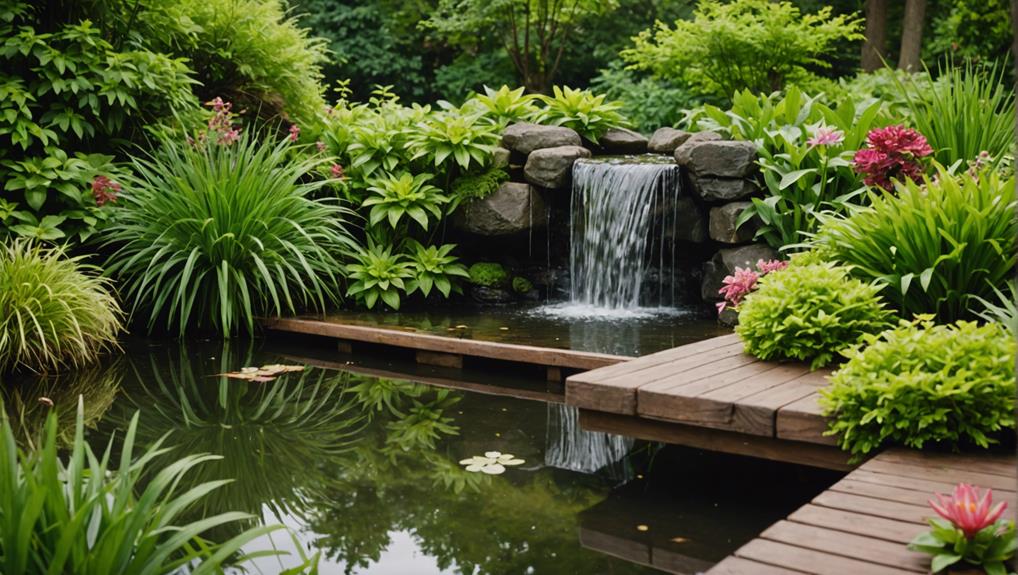
Immerse yourself in the tranquil world of water gardening, an activity where crafting ponds, fountains, and waterfalls not only beautifies your outdoor space but also creates a peaceful sanctuary. This interesting hobby involves integrating serene water features that enhance the aesthetic appeal of your garden while delivering a calming atmosphere unmatched by other landscaping practices.
To embark on water gardening, focus on thoughtful planning and diligent maintenance. Here’s a quick guide with some popular water features and tips to get you started:
| Feature Type | Planning Tips | Maintenance Tips |
|---|---|---|
| Ponds | Choose a location that receives partial sunlight to support aquatic plants. | Regularly monitor water levels and maintain cleanliness. |
| Fountains | Ensure the fountain’s scale is appropriate for your garden’s size. | Implement winterizing techniques to prevent damage in cold weather. |
| Waterfalls | Opt for natural stones for a cohesive natural appearance. | Maintain consistent water flow to prevent water stagnation. |
Incorporating aquatic plants such as water lilies and lotus enhances natural beauty and contributes to a healthy ecosystem. Regular upkeep and ecological balance are key to a flourishing water garden.
Expanding on the realm of water gardening, here are several related activities that aficionados might enjoy:
- Aquascaping: Design intricate underwater landscapes in aquariums.
- Rain Garden Creation: Build gardens designed to absorb rainwater runoff.
- Koi Pond Maintenance: Care for and cultivate koi fish in specialized ponds.
- Hydroponic Gardening: Grow plants in water without soil, often integrating aquatic elements.
- Bog Gardening: Create wetland habitats for a variety of moisture-loving plants.
- Stream Building: Construct artificial streams that add dynamic movement to the garden.
- Reflecting Pool Designing: Design pools that reflect the beauty of the surrounding area and sky.
- Bird Bath Crafting: Create attractive water features that also serve as a vital resource for local wildlife.
- Water Conservation: Implement systems and practices to conserve water within garden designs.
- Fountain Restoration: Restore old or historic fountains to their former glory.
Embrace the calm of water gardening and these related activities, and witness the transformation not just in your garden, but also in your overall well-being. This interest offers a perfect hobby for those seeking a blend of creativity, relaxation, and environmental care.
Edible Gardening: From Garden to Table
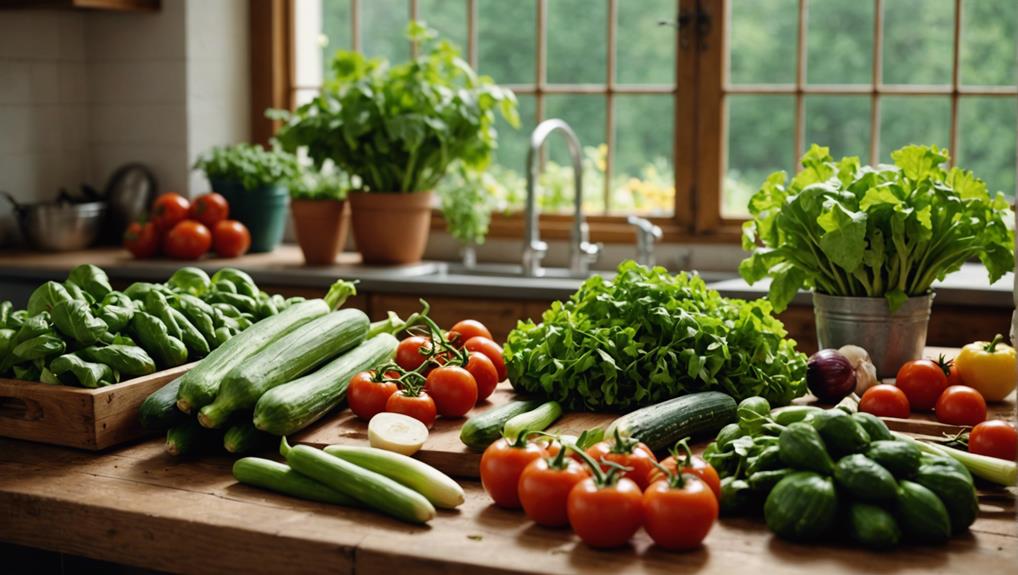
While water gardening boosts the aesthetic and spiritual aspect of your outdoor space, engaging in edible gardening offers tangible rewards with fresh, organic produce available directly from your garden to your table. By tending to your own garden beds, you’ll experience the satisfaction of harvesting fruits, vegetables, and herbs that are far superior to what’s typically available at the grocery store. Beyond being a delightful activity, edible gardening serves as a practical approach to ensuring the quality and freshness of your food.
Envision these captivating activities in your garden:
- *Harvesting ripe tomatoes, their skin radiantly warm from the sun, ideal for your salad or sandwich.*
- *Cutting fresh herbs in the early morning, adding aromatic flavors to your meals.*
- *Pulling up carrots, their bright orange hues popping against the dark soil.*
- *Gathering crisp cucumbers and vivid bell peppers to craft a colorful, crunchy addition to any dish.*
- *Picking succulent strawberries, bursting with sweetness, great for a healthy treat or dessert.*
- *Collecting fresh lettuce and spinach, tender and perfect for green salads.*
- *Picking aromatic basil and peppermint for flavoring dishes and making herbal teas.*
- *Unearthing beets, their deep reds and golden hues ready for roasting or pickling.*
- *Harvesting zucchini and squash for a versatile vegetable fix in various recipes.*
- *Picking fresh green beans, snappy and ideal for side dishes or stir-fries.*
These activities not only yield delicious and nutritious food but also foster a deeper connection with the natural cycle of growth and renewal. Moreover, the savings on grocery bills and the reduction of food waste are practical benefits that establish this hobby as deeply rewarding and sustainable. With such a diverse range of enjoyable hobby opportunities, edible gardening is certainly one of the most interesting hobbies, providing both personal and environmental benefits.
Floral Design: The Art of Flower Arrangement
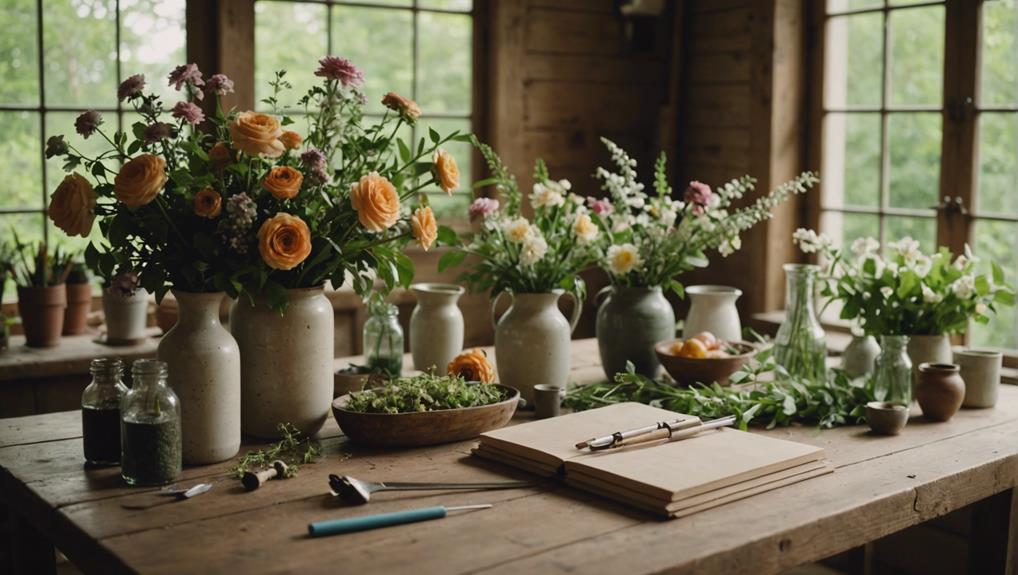
Floral design is a captivating art form that allows you to harness your creativity by skillfully assembling flowers and foliage into eye-catching compositions. This activity is akin to painting with the vibrant and varied palette provided by nature. What makes it even more appealing is the freedom to select from an extensive array of colors and textures to craft arrangements that mirror your personal flair and emotional state.
Exploring floral design can reveal a range of enjoyable hobbies within this category, each offering a unique way to engage with nature and aesthetics. Here are several aspects to consider as you explore the fascinating world of floral design:
- Vivid Color Blends: Create a visual impact by pairing deep violets with bright yellows, evoking the freshness of a spring morning.
- Textural Contrasts: Combine the softness of velvety petals with the coarse textures of bark and leaves for a tactile experience.
- Dynamic Lines and Forms: Introduce motion into your arrangements with sweeping curves or opt for a more dramatic effect with stark, angular lines.
- Natural Focal Points: Utilize bold, large blooms to catch the eye, supported by an ensemble of smaller flowers and foliage.
- Seasonal Themes: Celebrate the rhythm of the seasons with blooms that highlight the specific characteristics of each time of year, from the rebirth of spring with its tulips to the rich hues of autumn chrysanthemums.
Beyond these elements, here are some specific hobbies related to floral design:
- Boutique Floral Shops: Running or working in a boutique floral shop allows you to design custom arrangements for special occasions and everyday beauty.
- Wedding Floral Arrangements: Specializing in wedding bouquets and venue decorations can be a fulfilling and creative pursuit.
- Garden Design: Integrating floral aesthetics into garden layouts enhances outdoor spaces.
- Floral Photography: Capturing the beauty of your arrangements in photographs can be an art in itself.
- Floral Workshops: Leading workshops teaches others the skills and joy of floral design.
- Botanical Sculptures: Creating large-scale installations and sculptures using flowers and plants.
- Floral Competitions: Participating in floral design competitions to challenge your skills and gain recognition.
- Home Floral Decor: Crafting floral designs to beautify personal living spaces.
- Therapeutic Horticulture: Using floral design as a method of therapy, promoting well-being through interaction with plants.
- Eco-Friendly Floral Design: Focusing on sustainable practices within the floral industry.
Floral design isn’t just a hobby but an expansive field of interest that offers a plethora of activities for those passionate about combining artistry with nature. Whether you’re a beginner or an experienced florist, each project presents a unique set of challenges and rewards, making it a perfect hobby for creative expression and personal growth.
Sustainable Gardening: Eco-Friendly Practices

Adopting sustainable gardening practices not only beautifies your space but also plays a crucial role in conserving resources and supporting your garden’s natural environment. This approach helps in maintaining the ecological balance and contributes significantly to the health of our planet.
Engaging in eco-friendly gardening isn’t just a hobby; it’s a meaningful way to interact with nature. Here’s a list of sustainable gardening activities that are both rewarding and environmentally friendly:
- Composting: Initiate a composting system using kitchen leftovers and garden debris. This practice reduces the amount of waste sent to landfills and enhances the fertility of your soil, providing a nutrient-rich environment for your plants.
- Growing Native Plants: Choose plants native to your region as they adapt better to the local climate and soil, requiring less water and maintenance, thus conserving natural resources.
- Water Conservation Techniques: Employ methods like installing rain barrels and setting up drip irrigation systems to efficiently manage water usage, ensuring that you make the most of available water resources, particularly in areas prone to drought.
- Creating Wildlife Habitats: Designate areas of your garden to attract beneficial wildlife such as bees, butterflies, and birds. These creatures play an essential role in pollination and maintaining the balance of your garden’s ecosystem by controlling pest populations naturally.
- Natural Pest Control: Steer clear of chemical pesticides and opt for natural alternatives. For instance, planting marigolds can repel unwanted insects, and introducing ladybugs can help in controlling aphid populations.
- Permaculture Gardening: Integrate permaculture principles to develop a self-sustaining garden where each element serves a purpose, supporting the environment and reducing the need for external resources.
- Seed Saving: Practice saving seeds from your plants, which not only preserves the genetic diversity of plant species but also reduces the need for purchasing new seeds, promoting a cycle of sustainability.
- Green Roofing and Walls: Incorporate green roofs or plant walls to improve air quality and provide additional insulation for your home, which in turn reduces energy consumption.
- Xeriscaping: Focus on landscaping with drought-resistant plants to minimize water usage while maintaining a green, lush garden.
- Organic Gardening: Commit to organic gardening practices by avoiding synthetic fertilizers and pesticides, which helps preserve the soil’s health and keeps your garden’s ecosystem toxin-free.
As you explore these techniques and commit to cultivating plants that are both sustainable and beneficial, you realize that gardening isn’t just a pastime but an active contribution to an eco-friendly movement. Sustainable gardening is indeed a perfect hobby for those looking to make a positive impact on the environment while enjoying the therapeutic benefits of gardening.
Therapeutic Gardening: Healing Through Horticulture
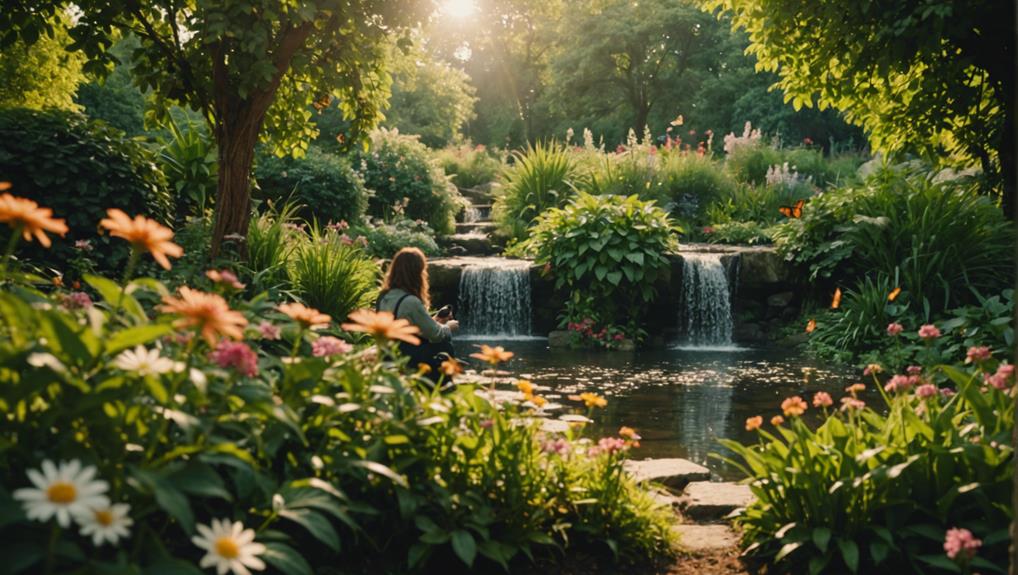
Therapeutic gardening is not just a pastime but a profound method to harness nature’s power to heal and enhance your mental and emotional well-being. Engaging with the earth and nurturing plants is a way to soothe your soul and create a serene escape from the daily grind. This activity is particularly beneficial for those dealing with anxiety or those seeking to uplift their mood. The act of tending to plants provides significant relief and joy, making gardening a perfect hobby for personal growth and relaxation.
Let’s explore some of the primary benefits of therapeutic gardening along with a variety of other related hobbies that can also promote well-being and satisfaction:
| Benefit | How It Helps | Ideal Activity |
|---|---|---|
| Reduces Stress | Lowers cortisol levels | Planting flowers |
| Boosts Self-esteem | Sense of accomplishments in gardening | Growing vegetables |
| Enhances Cognition | Stimulates learning and creativity | Designing a plant layout |
Expanding beyond therapeutic gardening, here are several hobbies within the realm of horticulture and outdoor activities that are equally enriching:
- Floral Design: Arranging flowers can be a therapeutic activity that enhances creativity and personal expression.
- Herb Gardening: Cultivating herbs not only spices up your cooking but also improves your connection to what you eat.
- Bonsai Cultivation: This intricate and detailed activity can help focus the mind and foster patience.
- Community Gardening: Joining a community garden can increase social interactions and contribute to community well-being.
- Landscape Photography: Capturing the beauty of nature through photography can be a relaxing and fulfilling hobby.
- Nature Walks and Hikes: Regular walks or hikes in nature are great for physical fitness and mental clarity.
- Bird Watching: This hobby encourages you to be present in the moment and increases your awareness of the ecosystem.
- Butterfly Gardening: Creating gardens that attract butterflies is a delightful way to enjoy wildlife and contribute to conservation.
- Aquaponics: Combining fish farming with plant cultivation offers a unique twist to conventional gardening.
- Terrarium Making: Building and maintaining small ecosystems inside glass containers can be a creative and soothing activity.
Each of these hobbies offers a unique way to connect with nature and can be adapted to fit individual lifestyles and interests. Whether you’re looking to reduce stress, boost your self-esteem, or simply enhance your cognitive skills, engaging in these activities can provide immense benefits and enrich your life in various ways.
Landscape Design: Shaping Your Outdoor Space
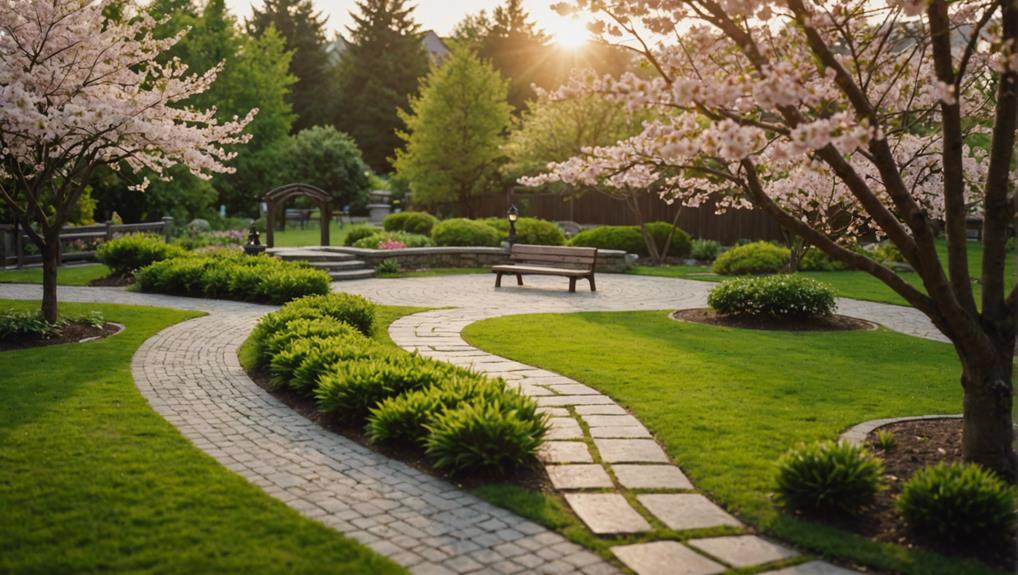
Transform your outdoor space into a captivating and practical sanctuary with thoughtful landscape design. By carefully selecting and positioning each element, you not only boost the curb appeal of your home but also its market value. Landscape design provides the perfect hobby for those looking to create a space for relaxation or lively social gatherings, enabling you to customize your surroundings to meet your unique preferences and requirements.
Here are some engaging hobbies within the realm of landscape design that you might consider to vividly shape your outdoor space:
- Native Plant Gardening: Choose plants that are well-adapted to your local environment to reduce maintenance and promote local biodiversity.
- Water Gardening: Install ponds, waterfalls, or fountains to add a tranquil element to your garden, attracting wildlife and creating soothing sounds.
- Rock Gardening: Utilize rocks and alpine plants to create an interesting, rugged landscape that offers a unique aesthetic with minimal upkeep.
- Vegetable Gardening: Grow your own vegetables to combine the beauty of greenery with the practicality of homegrown produce.
- Herb Gardening: Incorporate a variety of herbs that can enhance your cooking and provide aromatic fragrances throughout your garden.
- Ornamental Grass Gardening: Add texture and movement to your garden with grasses that provide year-round interest.
- Container Gardening: Ideal for limited spaces, use containers to grow plants, including exotic varieties that can be moved indoors during colder months.
- Succulent Gardening: Low maintenance and drought-resistant, succulents can add modern flair and color to your landscape design.
- Butterfly Gardening: Create a habitat for butterflies with specific plants known to attract and nourish these delightful creatures.
- Aromatic Garden: Focus on flowers and shrubs that release pleasing scents, enhancing the sensory appeal of your outdoor space.
Engaging in these landscape design activities allows you to craft a personalized retreat right in your backyard. Each of these hobbies not only makes your outdoor area more inviting but also serves as a great way to relax and reconnect with nature.
Specialty Gardens: Cultivating Unique Environments
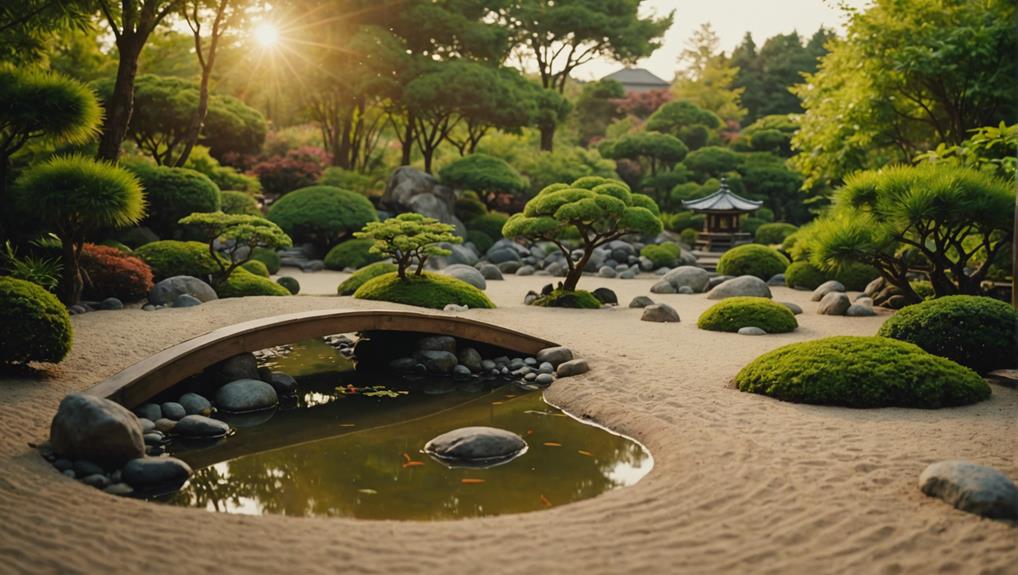
Specialty gardens offer a delightful way to create a customized environment that caters to your unique interests, ranging from therapeutic settings to cultivating rare plants. These gardens extend beyond mere planting; they’re about crafting a personal sanctuary that echoes your enthusiasms and promotes your well-being.
Here are some engaging activities you might consider incorporating into your specialty garden:
- Sensory Pathways: Create paths adorned with aromatic herbs like lavender and tactile elements like rustling bamboo to engage the senses and calm the mind.
- Therapeutic Corners: Develop peaceful nooks surrounded by soothing plants such as chamomile and soft-textured grasses, perfect for meditation and relaxation.
- Exotic Orchard: Experiment with a variety of unusual fruits such as tangy kumquats, creamy pawpaws, and striking dragon fruit, offering a taste of the tropics.
- Interactive Plant Stations: Dedicate spaces for hands-on gardening activities like grafting or propagating seedlings, enhancing your horticultural skills with each visit.
- Colorful Blossom Zones: Focus on cultivating flowering plants that change with the seasons, providing continuous vibrancy and beauty.
- Herbal Gardens: Grow a selection of medicinal and culinary herbs, turning your garden into a source for fresh, organic ingredients.
- Butterfly Gardens: Plant native flowers and shrubs that attract butterflies, creating a lively and colorful habitat.
- Water Features: Incorporate small ponds or fountains to add a soothing auditory element and attract wildlife.
- Vegetable Plots: Allocate areas for vegetable growing, which can be both a practical and rewarding aspect of gardening.
- Rock Gardens: Design a rock garden with an array of succulents and alpine plants, ideal for areas with poor soil.
- Vertical Gardens: Utilize vertical space with climbing plants or structured plant walls, especially useful in smaller areas.
Incorporating these activities into your specialty garden not only enhances its beauty and utility but also makes it a perfect hobby for personal growth and creativity. This tailored approach to gardening ensures a deep, personal connection to your outdoor space, making it a true reflection of your interests and a source of joy.
How to get started with gardening hobbies step by step
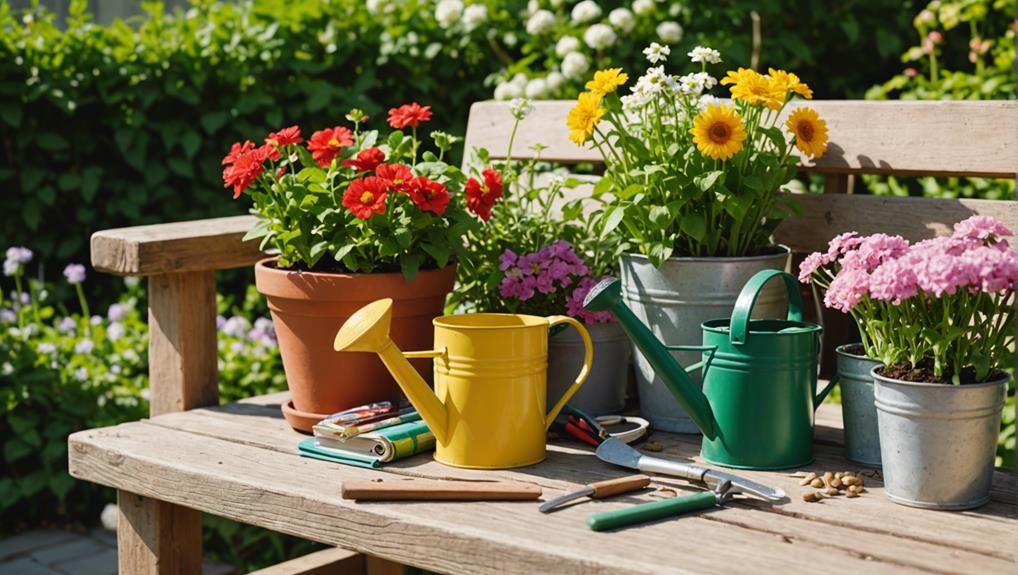
After exploring the unique elements you can include in your specialty garden, let’s look at how you can get started with your gardening hobby step by step.
To help you along the way, consider utilizing the AI Hobby Coach, an AI-powered solution that can create a personalized gardening checklist and strategy to guide you from beginner to expert, tailored to your time and budget.
To dive into the world of gardening, you’ll want to follow these practical steps:
- Research: Start by digging into different gardening hobbies. Whether it’s aromatic herb gardens, vibrant flower beds, or a vegetable patch, choose one that sparks your interest the most.
- Assess Your Resources: Look at the space, time, and resources you have. Can you dedicate a corner of your backyard, or should you start with a few containers on your balcony?
- Gather Tools: Invest in the essential tools and equipment needed for your specific type of garden. Basic tools might include gloves, a spade, pruning shears, and a watering can.
- Practice: Get your hands dirty! Plant a few seeds, tend to them regularly, and watch as your garden begins to grow. Learning by doing is key in gardening.
- Join a Community: Connect with other gardeners by joining online forums or local clubs. They can offer invaluable advice, inspiration, and camaraderie as you nurture your green thumb.
Benefits of Gardening and Landscaping Hobbies

Diving into gardening and landscaping hobbies not only enhances your physical health but also uplifts your mood and mental well-being. As you dig into the earth, plant seeds, and nurture your garden, you’re not just cultivating plants; you’re also sowing the seeds of happiness and health.
Here’s how these activities enrich your life:
- Physical Fitness: Imagine yourself bending, stretching, and walking around your garden. It’s like a natural gym session that keeps you physically active.
- Mood Enhancement: Picture the joy of seeing your first sprout emerge. The soil itself contains microbes that act as natural antidepressants, boosting your mood.
- Creative Outlet: Visualize designing a landscape or arranging your garden. Each choice in plant and placement sparks creativity and brings your artistic visions to life.
- Therapeutic Nature: Envision a quiet afternoon in your garden, surrounded by the fruits of your labor. This connection with nature can be incredibly calming and therapeutic.
- Sustainable Living: Think about using rainwater for irrigation or composting kitchen scraps. You’re not just gardening; you’re actively participating in environmental conservation.
Embrace these benefits, and you’ll find that your gardening hobby offers much more than just aesthetic appeal.
Tips and tricks for Gardening and Landscaping

To maximize your garden’s potential and maintain its beauty, consider these practical tips and tricks for effective gardening and landscaping. By integrating specific strategies, you’ll not only enhance the visual appeal of your space but also promote a healthier garden environment.
Let’s dive into some key methods that can transform your gardening and landscaping efforts:
- Incorporate Native Plants: Adding native species to your landscape attracts local wildlife and supports regional biodiversity. Picture butterflies fluttering around indigenous wildflowers, creating a vibrant, life-filled garden.
- Use Raised Beds: Elevate your vegetable garden with raised beds. This technique improves drainage, prevents soil compaction, and makes weeding easier. Imagine stepping between neatly organized beds, harvesting fresh produce without straining your back.
- Implement Companion Planting: Strategically place plants together to naturally repel pests and enhance growth. Envision marigolds protecting your tomatoes, creating a symbiotic and colorful garden tableau.
- Install a Rain Barrel: Capture rainwater from your roof to water your plants. It’s cost-effective and eco-friendly. Visualize a barrel tucked beside your shed, brimming with water after a summer rain.
- Create a Focal Point: Add a striking element like a sculpture or birdbath. This draws the eye and gives your space a unique character. Imagine a serene garden corner, anchored by an elegant fountain.
Be smart: Multitask and take Gardening and Landscaping to the next level
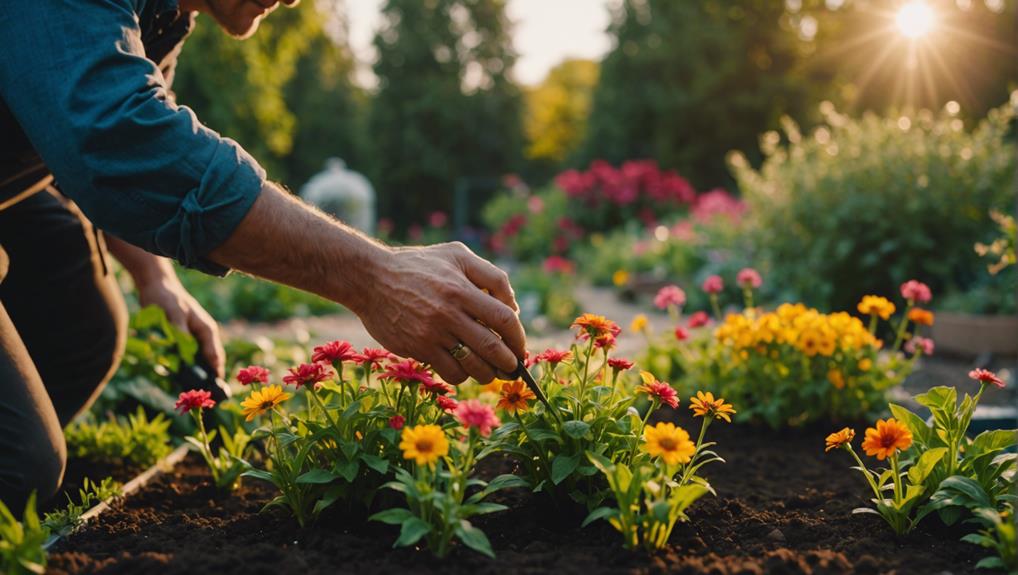
Building on these foundational tips, let’s explore how multitasking in your gardening and landscaping efforts can significantly enrich your experience and elevate your outdoor space. Here are some smart ways to make the most out of your hobby:
- Integrate Learning with Gardening: Enhance your gardening sessions by listening to audiobooks on platforms like Audible or Blinkist. This allows you to absorb knowledge on various topics, ranging from gardening tips to personal development, while actively working in your garden.
- Advance Your Skills Through Online Courses: Consider enrolling in affordable online courses tailored to gardening and landscaping. Platforms such as Skillshare, Coursera, and Udemy offer a range of tutorials and classes that can help you enhance your techniques and introduce you to new concepts.
While looking for new Gardening and Landscaping Hobbies, try fully personalized AI Hobby generator
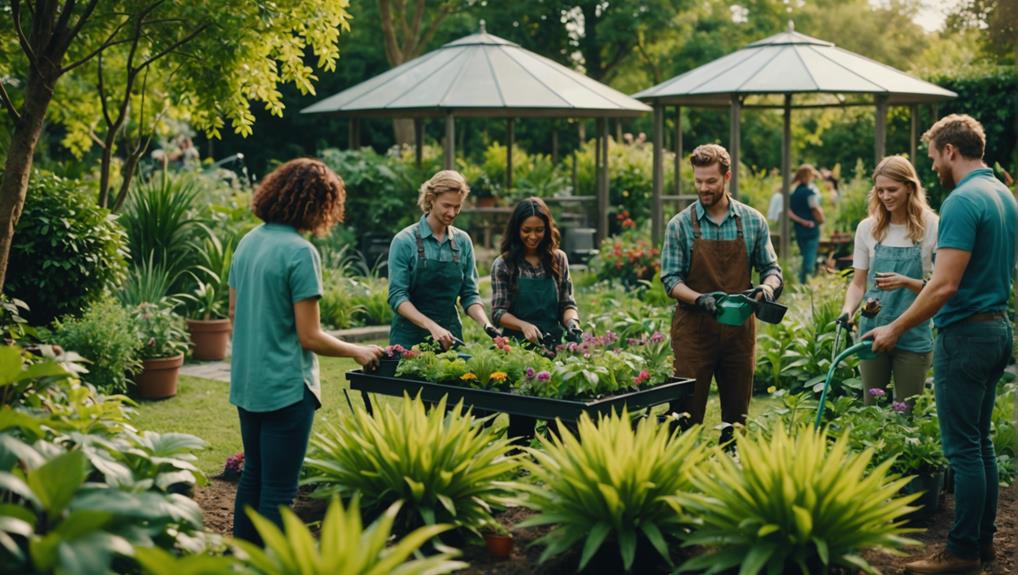
Discovering new gardening and landscaping hobbies has never been simpler or more thrilling with our cutting-edge, personalized AI hobby generator. This AI-powered tool is designed to align hobby suggestions with your personal lifestyle and interests by utilizing a few easy questions asked through our chatbot. The more information you share about your needs and the type of hobbies you’re interested in, the more tailored the recommendations will be.
Imagine a smart system that understands your gardening expertise level, whether you’re a beginner seeking simple garden projects or an advanced enthusiast looking for more complex challenges. Once it gathers your preferences, our AI hobby generator crafts a list of creative and personalized hobby suggestions just for you.
Each suggested hobby not only broadens your gardening skills but also brings new joy and fulfillment into your daily life, combining practicality with your passion for the outdoors. Let our AI hobby generator guide you in cultivating a garden that truly reflects your unique personality and preferences.
Final thoughts
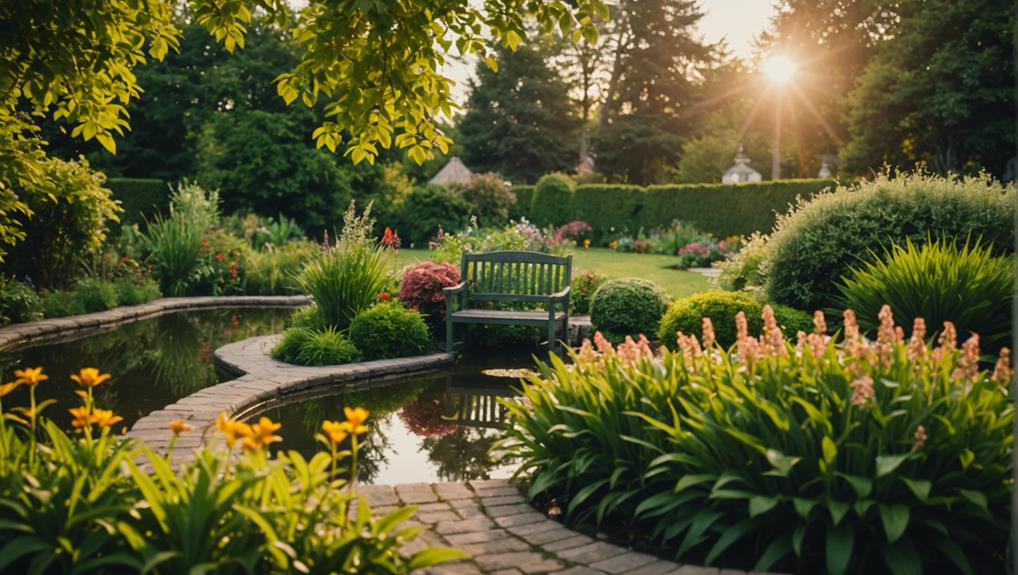
As you delve into the world of gardening and landscaping, remember that every plant you nurture not only beautifies your space but also enhances your personal well-being. It’s not just about the aesthetic appeal; it’s about the deeper connection you forge with nature, the physical activity that keeps you moving, and the peace of mind that comes with tending to your garden.
Whether you’re experimenting with beekeeping, trying your hand at plant breeding, or creating a haven for wildlife, each activity offers a unique way to expand your skills and express your creativity.
You’ve got the freedom to mold these hobbies to fit your lifestyle and space. Whether you have a sprawling backyard or a small balcony, there’s a gardening activity that can work for you. Embrace sustainable practices and learn more about the plants you care for; this not only helps the environment but also deepens your appreciation for the natural world around you.
Let your garden be a reflection of your interests and values. As you continue to explore and grow, remember that each choice you make in your garden impacts not just your immediate surroundings, but also contributes to a greater ecological balance. Keep growing, keep learning, and most importantly, keep enjoying every moment in your garden.
Frequently Asked Questions
What Are Some Examples of Gardening Hobbies?
You might explore beekeeping, basket weaving, or even brewing herbal medicine. Gardening offers diverse hobbies like planting sensory gardens or cultivating bonsai, each enriching your life and connecting you with nature.
Is Gardening a Good Hobby?
Yes, gardening’s a great hobby for you! It boosts your mood, burns calories like a gym session, and provides a fulfilling sense of accomplishment while connecting you deeply with nature and creativity.
What Kind of Person Likes Gardening?
You’re likely a nature lover who enjoys nurturing and watching things grow if you’re drawn to gardening. It’s a hobby that suits patient, creative individuals looking for relaxation and fulfillment.
What Do You Call the Hobby of Growing Plants?
You’d call the hobby of growing plants “gardening.” It allows you to connect deeply with nature, creatively shape your surroundings, and enjoy the fruits—or flowers—of your physical and mental efforts.




